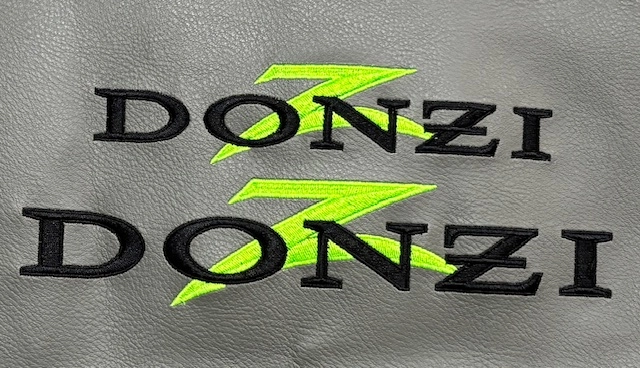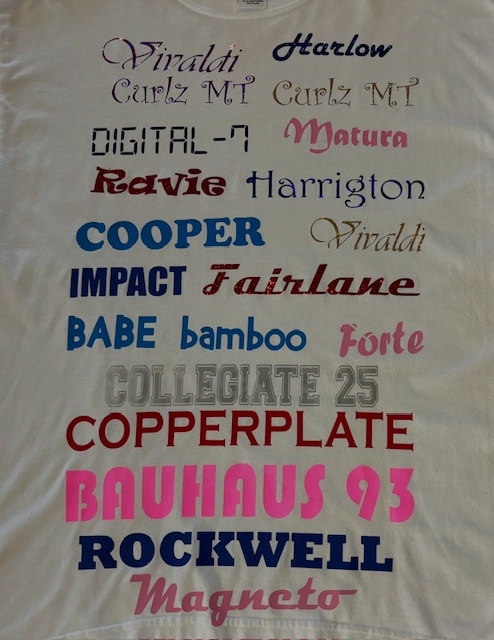Heat Transfer on T-Shirts and Aprons - Customized Designs and Logos
Heat Transfer on T-Shirts and Aprons - Customized Designs and Logos
Blog Article
The Art of Personalized Embroidery: Opening the Keys to Creating Distinct and Unforgettable Styles
The secrets to developing custom-made embroidery designs that astound the eye and leave a long lasting impact lie in a fragile balance of strategy, creativity, and focus to detail. As we dive into the world of custom embroidery, we uncover the nuanced interaction in between string choice, stitch intricacy, and layout customization that raises a simple garment to a job of art.
Choosing the Right Embroidery Threads
When selecting needlework strings, what essential variables should you take into consideration to make certain the very best results for your customized designs? The choice of needlework thread is critical in figuring out the final end result of your embroidered style. Among the primary considerations is the product of the thread. Various materials such as cotton, polyester, rayon, and silk supply differing degrees of sheen, sturdiness, and structure. It is vital to choose a string material that enhances the material you are embroidering on and lines up with the wanted look of the design.
Additionally, the weight or thickness of the string plays a significant role in the look of the embroidery. Thicker strings can include measurement and structure to your layout, while finer threads are perfect for intricate details and small message. In addition, taking into consideration the color fastness and washability of the string is vital to make sure that your customized styles keep their quality and vibrancy over time. By very carefully evaluating these aspects and picking premium strings that meet your specific demands, you can enhance the visual appeal and longevity of your embroidered creations.
Discovering Various Stitch Methods
To dive right into the realm of 'Checking out Different Stitch Techniques', one have to grasp the complexities and subtleties that each stitching method gives the art of needlework. Different stitch techniques not just include aesthetic interest yet also add to the general structure and measurement of the layout. One preferred stitch technique is the satin stitch, which involves very closely stuffed parallel stitches to create a smooth and glossy surface area, ideal for completing shapes and creating strong outlines.
On the other hand, the backstitch is a flexible technique commonly utilized for describing and adding fine details. It includes stitching backwards to develop a solid line of needlework. Additionally, the French knot stitch adds a responsive component to styles, best for developing distinctive accents like blossom facilities or decorative touches.
Discovering various stitch strategies permits embroiderers to play with light, darkness, and deepness within their styles, boosting the aesthetic appeal and creative high quality of their needlework tasks. By grasping numerous sewing techniques, one can unlock unlimited possibilities for creating unique and unforgettable personalized embroidery items.
Incorporating Personalized Design Aspects
Having explored the details of different stitch strategies such as the satin stitch, backstitch, and French knot, the focus currently moves in the direction of integrating tailored design aspects in customized embroidery projects. Personalized style components play an important role in making needlework projects absolutely distinct and memorable.
One more method to integrate tailored design aspects is by consisting of symbols or themes that hold special definition to the recipient or reflect their rate of interests and personality. Incorporating a favored flower, pet, or hobby-related symbol can make the embroidery style a lot more purposeful and link customized. Furthermore, choosing colors that resonate with the recipient or align with the desired style can further enhance the personalization of the embroidery job.
Understanding the Art of Shade Control

One secret element of shade control is recognizing color theory. This includes understanding exactly how various shades connect with each various other, the feelings they convey, and exactly how they can be integrated to produce visually enticing styles. By using color theory principles, embroiderers can create harmonious color combinations that improve the general appearance of the style.
In addition, taking notice of contrast is essential in color coordination. Utilizing contrasting colors can help certain elements of the layout pop, boost readability, and develop an aesthetically vibrant embroidery piece. By grasping the art of color sychronisation, embroiderers can elevate their designs and develop unforgettable pieces that reverberate with customers and visitors alike.
Enhancing Appearance With Advanced Needlework Stitches

French knots, for instance, are best for adding small, raised dots to your design, mimicking the look of beads or creating a textured surface area. Bullion knots, on the various other hand, can be utilized to produce twisted, click here for info ropelike aspects that add an extravagant feeling to the embroidery. Seed stitching involves tiny, scattered stitches that can fill in areas with a speckled texture, while turkey work creates fluffy, dimensional accents reminiscent of animal hair or vegetation. Exploring with these sophisticated embroidery stitches allows you to push the borders of typical needlework and produce really distinct and visually enticing appearances in your styles.
Conclusion
Finally, the art of customized embroidery entails a combination of choosing the best threads, checking out different stitch techniques, integrating individualized design aspects, mastering color sychronisation, and improving structure with innovative stitches. By comprehending and implementing these crucial elements, embroiderers can develop distinct and remarkable styles that display their creativity and ability. Needlework lovers can unlock the keys to creating attractive and bespoke items that stand out and leave an enduring perception.
Report this page